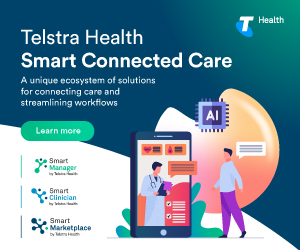Shared care models and the future of ophthalmology
As a medical specialist who has undertaken extensive training in the diagnosis and management of disorders of the eye and the visual system, ophthalmologists offer a full spectrum of eye care, including complex microsurgery. In this article, we take a look at how shared care models are shaping the future of ophthalmology in Australia.
The current ophthalmology landscape
According to the Department of Health, there were 990 accredited ophthalmology specialists with current medical registration in 2016. The large majority were clinicians (97 per cent), 21 per cent were female and only 16 per cent of the workforce worked in the public sector. The average age of the ophthalmology workforce was 53 years.
The Royal Australian and New Zealand College of Ophthalmologists (RANZCO) reported 146 trainees in 2016, while the National Health Workforce Data Set (NHWDS) reported 134 trainees – of which 34 per cent were female.
Shared care models
Integrated eye care, and the working relationship between optometrists and ophthalmologists, have been a key focus of improvement for the Department of Health for a number of years.
Within a shared care model, optometrists can assess vision; manage refractive errors through issuing glasses and screen for serious eye diseases; ophthalmologists then focus on diagnosis and management of eye disease. In some situations, optometrists provide routine follow-up for stable eye disease, referring back to ophthalmologists when needed.
According to the recent Australia’s Future Health Workforce – Ophthalmology report , this shared care model developed between ophthalmology and optometry is now demonstrating a number of key benefits, including reduced waiting times for new patients.
“Patients benefit through accessible, high quality eye care and timely follow-up, thereby reducing the risk of adverse consequences of chronic diseases,” the report states.
Other advantages of a shared care model include:
- Leveraging the strengths of each practitioner.
- Improving efficiency in patient care.
- Providing a clear understanding of patient needs.
- Streamlining patient management
- Providing more personalised patient care
Indigenous eye health
Despite the benefits of more integrated eye care, the report reveals that access to eye care is still disproportionately problematic for Indigenous people.
And the figures are startling. 1 in 9 Indigenous Australians aged over 40 (11%) suffer from vision impairment or blindness. Meanwhile older Indigenous Australians are three times more likely to suffer from vision impairment or blindness as older non-Indigenous Australians.
Worryingly, the Indigenous hospitalisation rate for cataract surgery rose by 36% in the last 10 years, with median waiting times for cataract surgery longer for Indigenous Australians (152 days) compared to non-Indigenous Australians (93 days).
In order to facilitate better eye health care within Indigenous communities, the report recommends more specialised training for Indigenous ophthalmologists, and that during the training, process eye health providers complete a core component of rural and Indigenous eye health work.
How technology can help
Recent data reveals the average ophthalmologic specialist spends at least ten hours a week on paperwork and administration. Specialist practice management software such as Bluechip, by MedicalDirector, can help save time, manage patient appointments, while run reports and track business growth – all in one integrated platform.
Specialists can reduce patient no-shows and enhance patient experience with automated SMS reminders and alerts, and choose from a variety of appointment book templates to boost bookings and manage multiple appointment books easily.
Bluechip also integrates with a wide range of technology partners such as EFTPOS system Tyro, and financial management system Surgical Partners.









